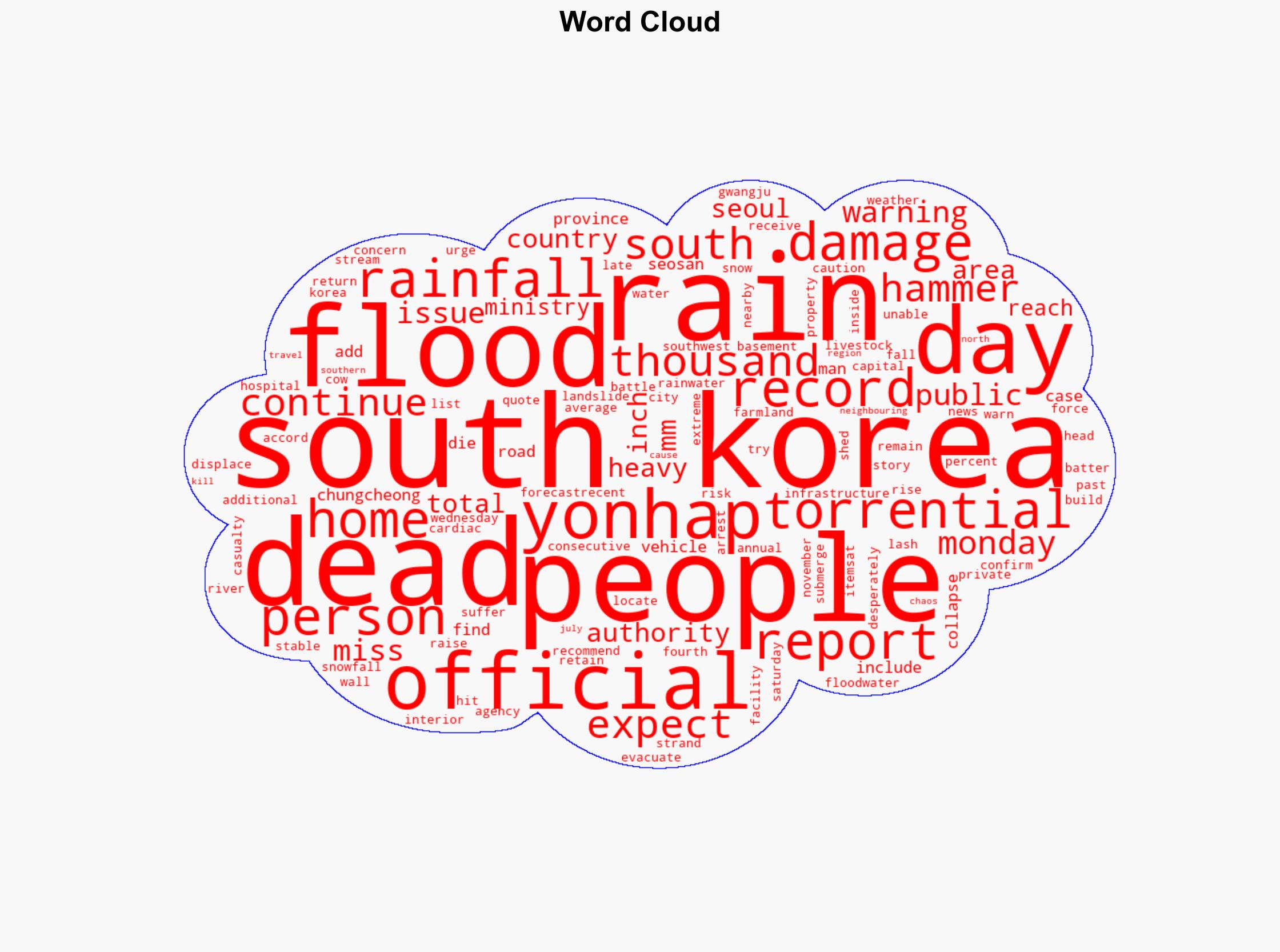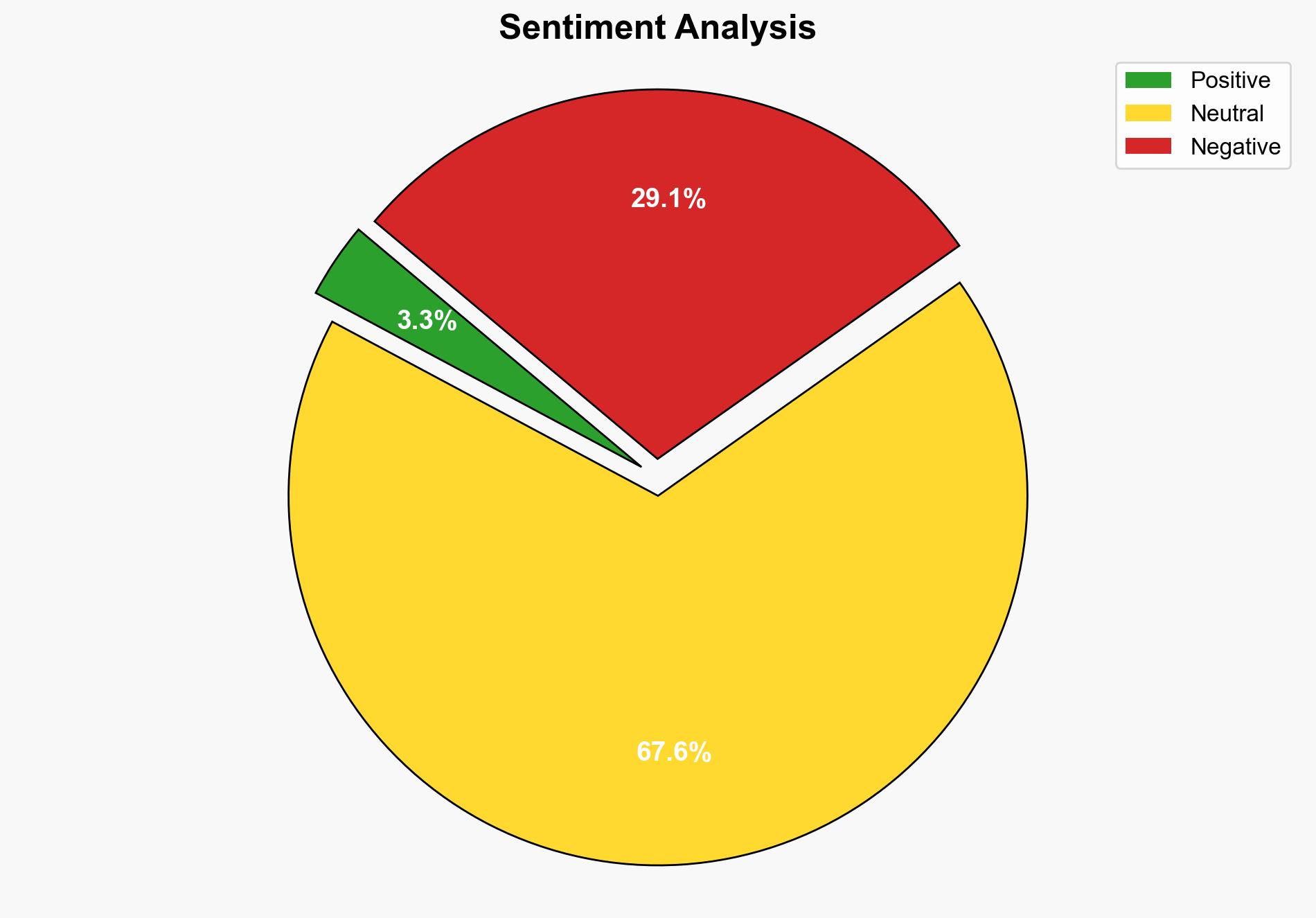Four dead as South Korea lashed by torrential rain displacing thousands – Al Jazeera English
Published on: 2025-07-19
Intelligence Report: Four dead as South Korea lashed by torrential rain displacing thousands – Al Jazeera English
1. BLUF (Bottom Line Up Front)
South Korea is experiencing severe weather conditions, with torrential rains leading to significant displacement and casualties. The ongoing rainfall has resulted in four confirmed deaths and the evacuation of thousands. Authorities anticipate continued adverse weather, raising concerns about further damage and potential casualties. Immediate strategic focus should be on disaster response coordination, infrastructure resilience, and public safety measures.
2. Detailed Analysis
The following structured analytic techniques have been applied to ensure methodological consistency:
Causal Layered Analysis (CLA)
– **Surface Events**: Torrential rains causing floods, displacement, and casualties.
– **Systemic Structures**: Inadequate infrastructure to handle extreme weather, emergency response protocols.
– **Worldviews**: Public perception of government preparedness and response effectiveness.
– **Myths**: Historical resilience narratives and cultural attitudes towards natural disasters.
Cross-Impact Simulation
– Potential impact on neighboring regions, including North Korea, due to shared water systems and weather patterns.
– Economic dependencies affected by disrupted transport and agricultural sectors.
Scenario Generation
– **Best Case**: Rapid recovery with minimal additional casualties; effective government response.
– **Worst Case**: Prolonged rainfall leading to widespread infrastructure collapse and significant economic impact.
– **Most Likely**: Continued rainfall with moderate additional damage and displacement.
3. Implications and Strategic Risks
– **Political**: Potential criticism of government response; public unrest if response deemed inadequate.
– **Economic**: Disruption to agriculture and transport sectors; potential impact on regional trade.
– **Social**: Increased displacement leading to humanitarian needs; strain on emergency services.
– **Environmental**: Risk of landslides and further flooding exacerbating damage.
4. Recommendations and Outlook
- Enhance coordination between national and local emergency services to improve response times and resource allocation.
- Invest in infrastructure improvements to mitigate future flood risks, including drainage systems and flood barriers.
- Develop public awareness campaigns to educate citizens on safety measures during extreme weather events.
- Scenario-based projections suggest focusing on immediate relief efforts while planning for long-term infrastructure resilience.
5. Key Individuals and Entities
– No specific individuals are named in the source text.
6. Thematic Tags
natural disasters, emergency response, infrastructure resilience, regional stability





